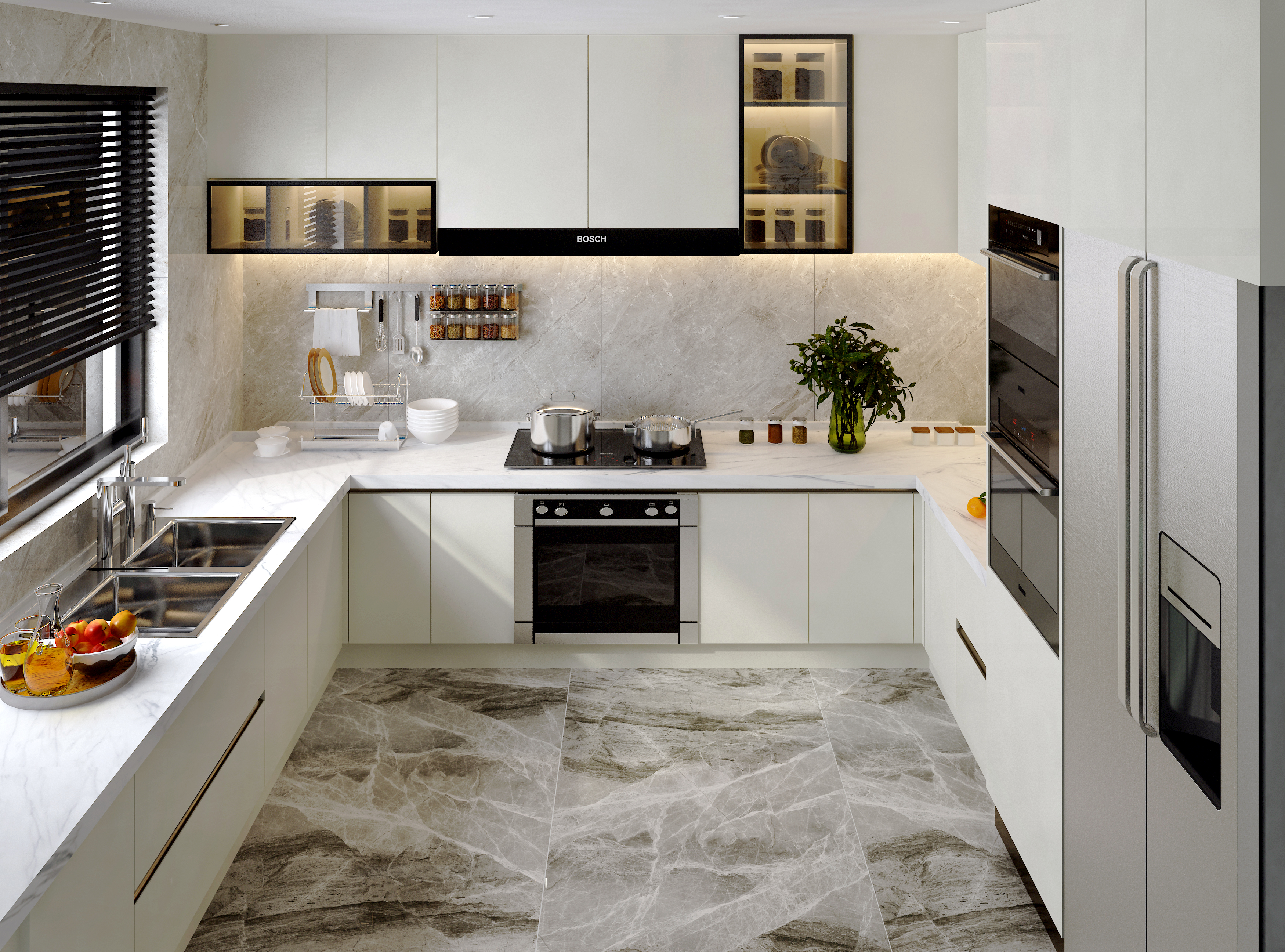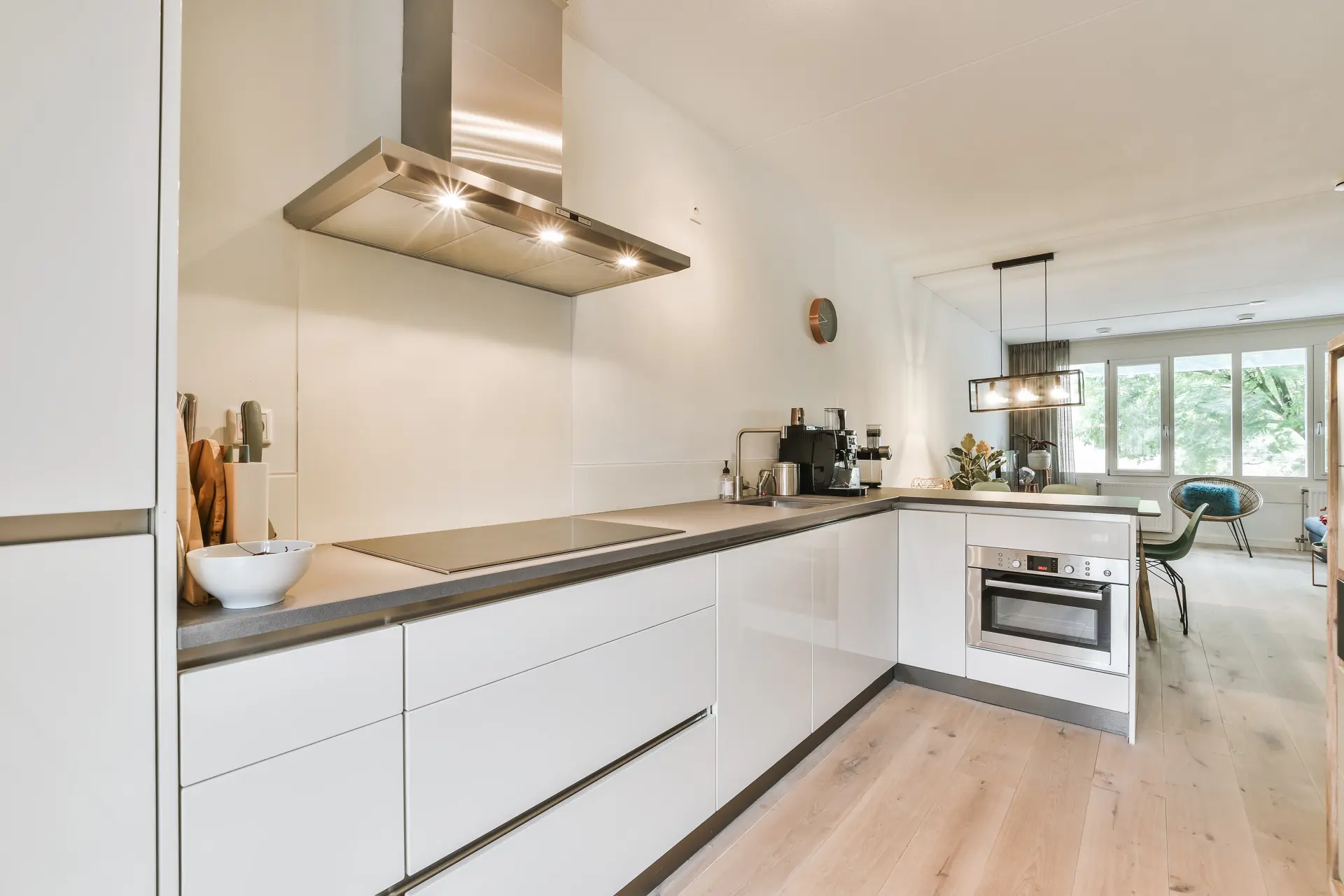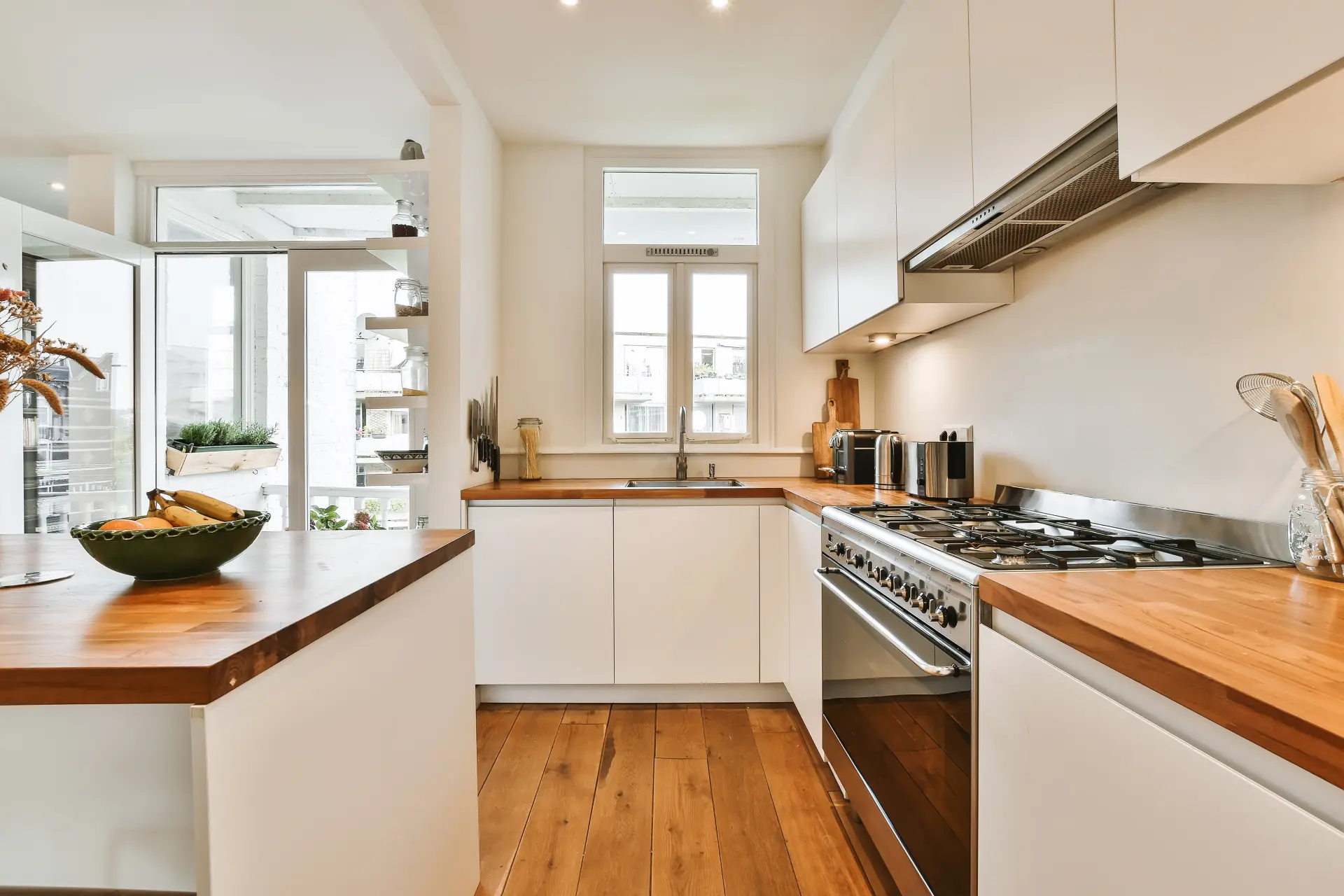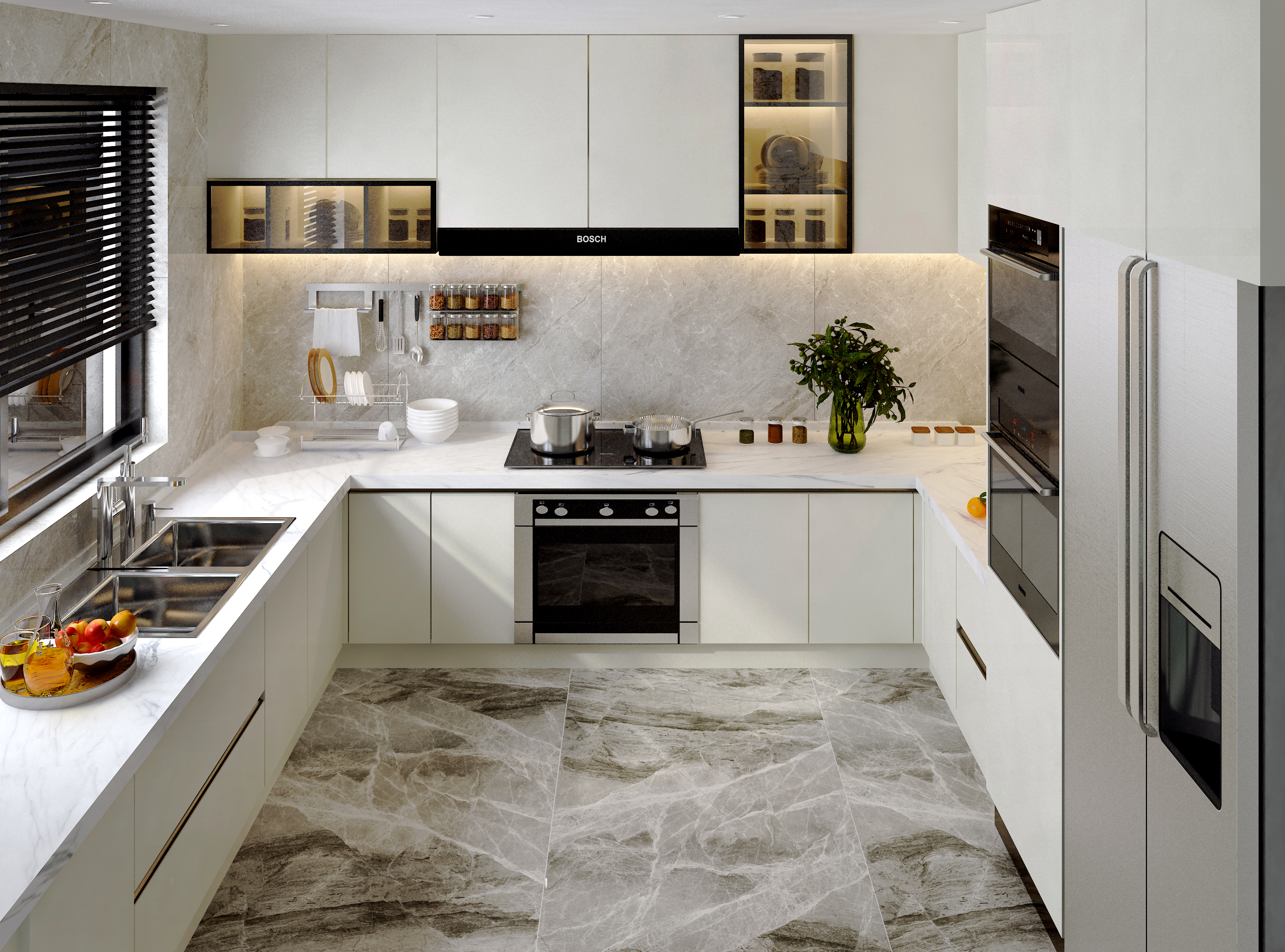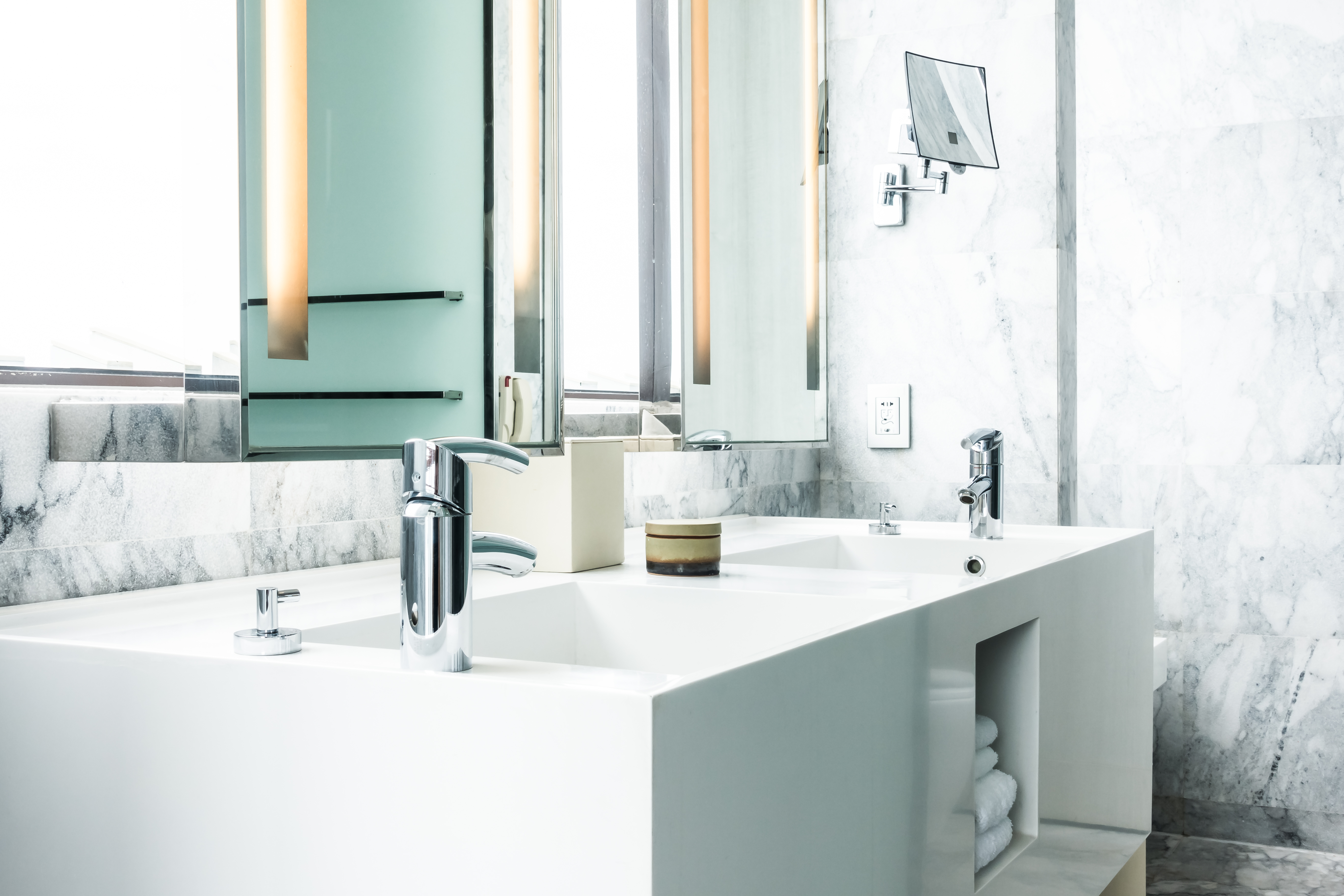Budgeting for a new kitchen installation is essential to get the most for your money. Our expert guide can help you plan costs, avoid surprises, and create a sleek kitchen within your budget.
Set a Realistic Budget from the Start
Setting a realistic budget from the very beginning is essential when planning a kitchen installation. With a proper budget in place, you’re more likely to make smart, well-informed decisions about materials, fittings, and labour. It also helps you avoid financial surprises, such as hidden installation fees or the cost of fixing unexpected issues, keeping the project on track from start to finish.
A realistic budget allows you to understand what you can afford and where your money should go. It’s important to include the cost of cabinets and worktops as well as fitting, plumbing, electrics, flooring, and any new appliances. These extra costs add up quickly, and without a proper plan, they can come as an unwelcome surprise.
Setting a budget also helps you plan for hidden costs. During the installation, you might uncover problems like old plumbing or uneven floors - however, if you’ve already set aside some of your budget for unexpected issues, you won’t need to delay the project or cut corners to make up the difference.
Unexpected issues during a kitchen installation can cause stress, unwanted delays, and the need to compromise on quality by choosing cheaper materials or leaving parts of the job unfinished. By creating a realistic budget early on, you can plan each stage of the project carefully and ensure everything runs smoothly and stays within your budget.
Break Down the Main Costs
When planning a new kitchen installation, setting a clear and realistic budget is essential. One of the best ways to manage this budget is by breaking down the main costs involved.
In the UK, the main costs of a kitchen installation usually fall into a few key areas: units and worktops, appliances, labour, plumbing and electrics, flooring, wall finishes, and extras like lighting or splashbacks.
By listing these separately, you can see how each one contributes to the total price. For example, kitchen units and worktops often take up the largest portion of the budget; knowing this allows you to compare different materials and styles without overspending.

Breaking down the costs of your kitchen installation also allows you to prepare for extra work or unforeseen problems during the project.
Common issues can include repairing uneven floors, upgrading outdated electrical wiring, or relocating plumbing to suit the new layout. These tasks often add to the overall price and can delay the project if it's not planned for in advance.
By setting aside a portion of your budget as a contingency fund, you can handle these unexpected costs without going over budget or compromising on quality.
Cost of Cabinets, Worktops and Appliances
When budgeting for a new kitchen installation, it's important to factor in the cost of cabinets, worktops, and appliances early on in the planning process. These three elements often make up the largest part of the total cost, and having a clear idea of their price range can help you manage your budget more effectively.
Cabinets are usually the biggest expense in any kitchen project, and their price can vary depending on the material, size, finish, and whether they are custom-made or pre-assembled. Basic flat-pack units are typically more affordable, while bespoke or high-end cabinets can be significantly more expensive. By knowing how much you're willing to spend on cabinets, you can decide where to save and where to invest, ensuring you get good quality without breaking your budget.
Worktops are a major part of any kitchen installation and they can significantly affect your overall budget. Different materials, such as laminate, wood, granite, or quartz, vary in both price and maintenance requirements. Choosing a material that fits your lifestyle and budget ensures your kitchen is both functional and visually appealing in the long term.
Appliances like ovens, hobs, dishwashers, and fridges also take up a large portion of the budget. You’ll need to decide whether to keep your existing appliances, buy new ones, or upgrade to built-in or energy-efficient models. By listing each appliance and its estimated cost, you will have a clearer view of how these choices affect your total spending.
Get Quotes from Trusted Kitchen Fitters
Many homeowners focus on the cost of cabinets, worktops, and appliances, but often overlook the cost of professional labour, which can make up a large part of the total expense By requesting and comparing quotes, you can ensure you’re not overpaying and that the job will be completed to a high standard by someone with proven expertise.
Trusted fitters are more likely to be upfront about possible challenges or added costs, such as dealing with old pipework or correcting uneven surfaces. Fitters with a good reputation will also offer guidance on where you could save money or suggest more cost-effective solutions.
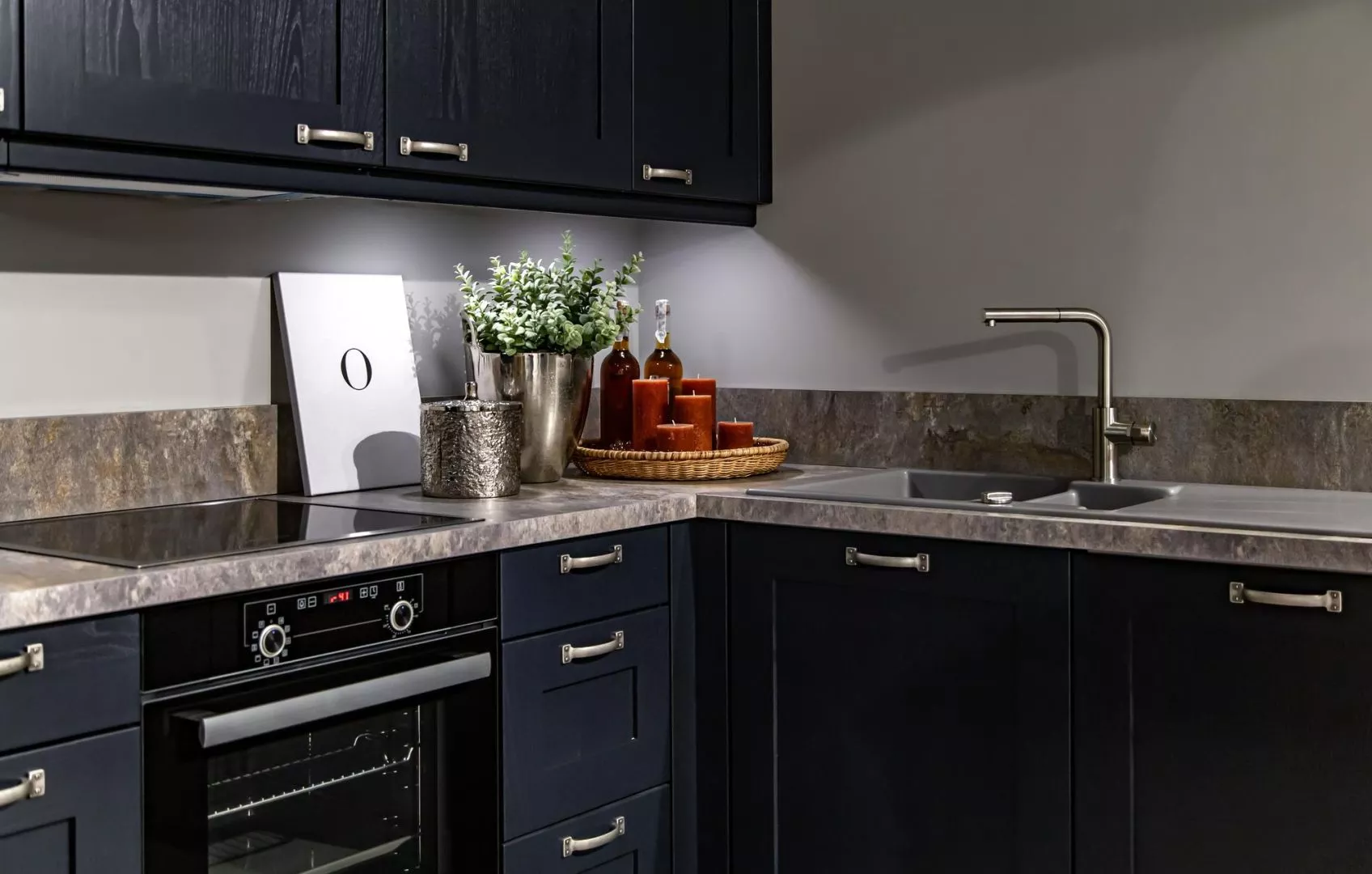
Choosing the cheapest quote without checking the fitter’s background can also lead to poor workmanship, delays, or extra costs if mistakes need to be fixed. By getting quotes from fitters who are experienced and fully qualified, you can reduce the risk of problems and make sure the work is done to a high standard.
Getting quotes from trusted kitchen fitters allows you to plan your budget with more confidence. It ensures you understand the full cost of the installation, helps you compare services, and gives you peace of mind that your investment is in safe hands. Taking the time to find the right tradesperson is one of the smartest ways to stay within budget and achieve a professional result.
Manchester Maintenance provides professional kitchen installation services tailored to your needs in Stockport, Salford and Manchester. We focus on installing high-quality, functional, and stylish kitchens that integrate perfectly into your home and lifestyle.

